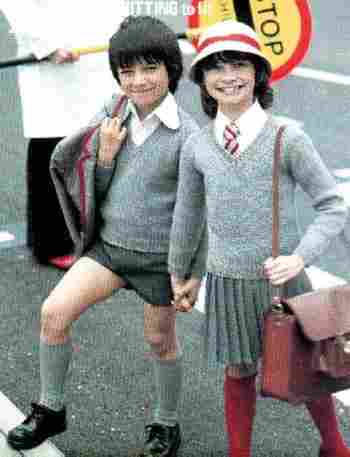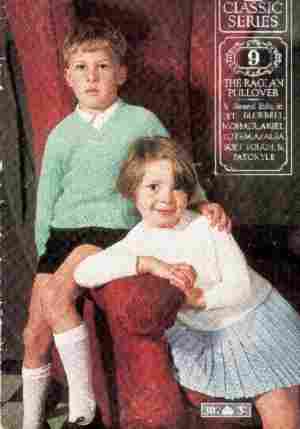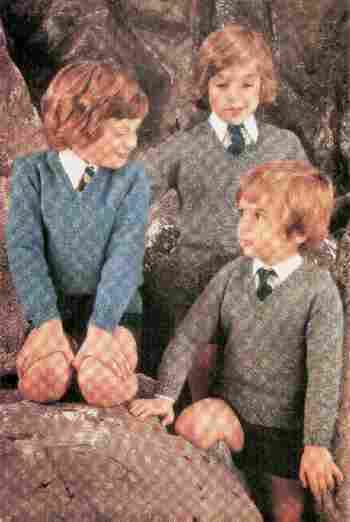
Figure 1.--The V-neck sweater appeared when British schoolboys began wearing neckties in school collars with soft collared shirts, replacing the traditional Eton collar.


Figure 1.--The V-neck sweater appeared when British schoolboys began wearing neckties in school collars with soft collared shirts, replacing the traditional Eton collar. |
Some pullover sweaters are made with a "V" front. They are some
of the most commonly worn sweater styles. These are generally
designed to be worn with ties, the "V" allowing the ties to be seen. Most
school sweaters are "V" neck.
The "V"-neck sweater is one of the most recent styles to develop. I
do not recall seeing "V"-necks until the 1920s. This is primarily
because there was no need for a "V" neck until boys began wearing neck
ties with soft collars, replacing the rather uncomfortable looking
Eton collar
The "V"-neck had declined in popularity during the 1990s as schools
began dropping the necktie requitrment. In additiin, many schools
began turning to less expensive and often more colorful sweat shirts.
In fact it did not make good sence making "V"-necks as the front collar opening
allowed body heat to escape. The "V"-neck is purely a design inovation to
better display a tie, primarily the boys school tie. The basic design
was very similar, a big "V" cut out of the front of the sweater.
The V-neck was primarily a style for school wear. Most English schools
required ties and many still do. It was, as a result,
probably the most widely worn style of sweater in England. As a result,
I think parents and boys were acusyomed to this style and purchased it
even if it was not to be worn with a tie.

Figure 2.--While school sweaters were mostly grey, V-necks were also made in other colors for home wear. |
Most "V"-necks were long sleeve sweaters. Some were made in the
sleeveless style, but they were not nearly as common.
"V"-neck sweaters have little or no decoration and a standard flat
weave. Some schools, mostly private schools, added trim in the
school colors. A few schools in the 1980s began adding the school
logo or name, but always in small descret script.
The primary color for most "V"-neck sweaters was grey, primarily
because it was so widely worn at schools. Few schools adopted colored
sweaters, although a few did use blue and a variety of other colors. Many schools by the 1960s began adding colored trim in the school colors to the "V" neck
line and wrist cuffs. Less common was a color waist band.
The initial "V"-neck sweater was worn by boys. Girls schools, ever imitating the boys' schools, soon began adopting the necktie, at first worn with a blouse an jumper-style dress. Some schools eventually adopted the "V"-neck sweater as well. This was particularly common as prep schools, particuloarly coed schools.

Figure 3.--While most V-necks were grey, some were also made in blue and other collars. |
Neckties as we now know them are a relatively recent fashion accesory. The primary modern male
neckwear can be be traced to the 17th-century cravat. As with so much of male fashion, the style is
military in origin. Ties have only been worn by boys since the 1920s. They were extensively worn in
the 1920s-40s as boys routeinly wore suits or blazers to school and to a variety of events and
activities that now would call for casual clothes. In our more casual modern era, many American
boys rarely wear ties and may not, in fact, learn to tie a knot until their teens. Usually British boys
learn to handle a tie at an earlier age.
Navigate related Boys' Historical Clothing Web Site sweater pages pages:
[Return to the Main sweater page]
[Cable knit]
[Cardigans]
[Jersey]
[Pull-over]
[Turtle-neck]
[V-neck]
Navigate the Boys' Historical Clothing Web Site:
[Introduction]
[Chronology]
[Clothing styles]
[Biography]
[Bibliography]
[FAQs]
[Photography]
[Contributions]
[Boys' Clothing Home]
